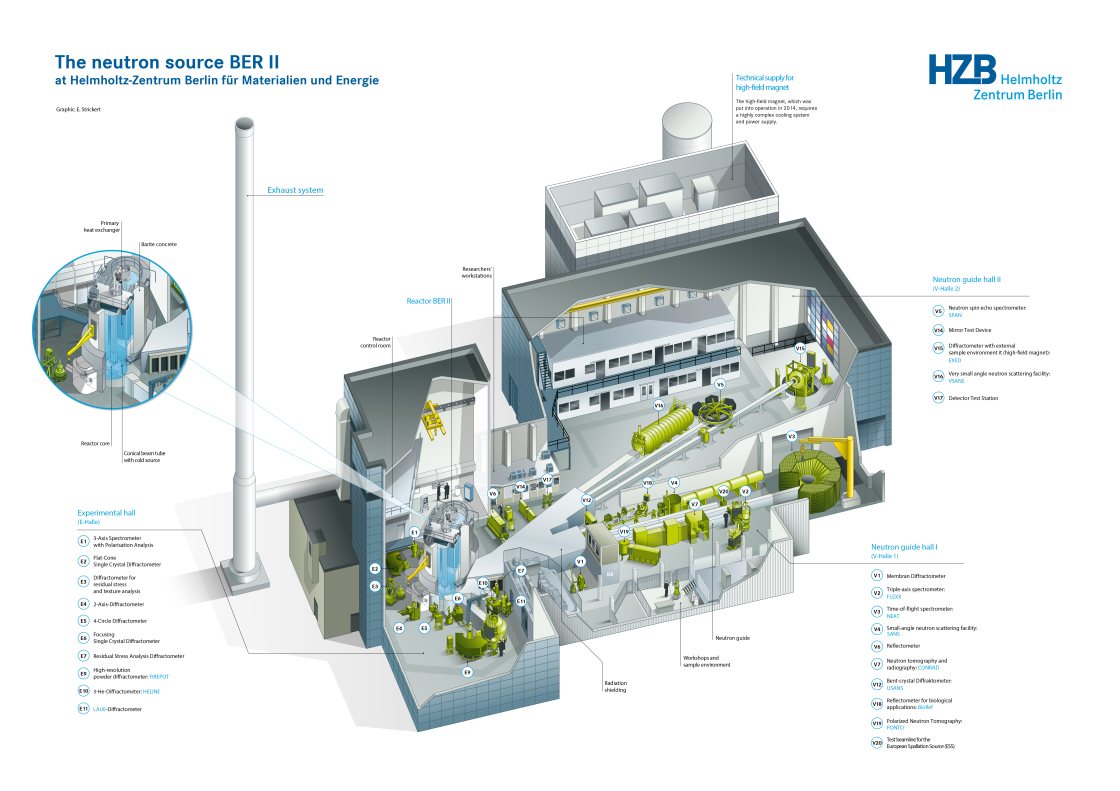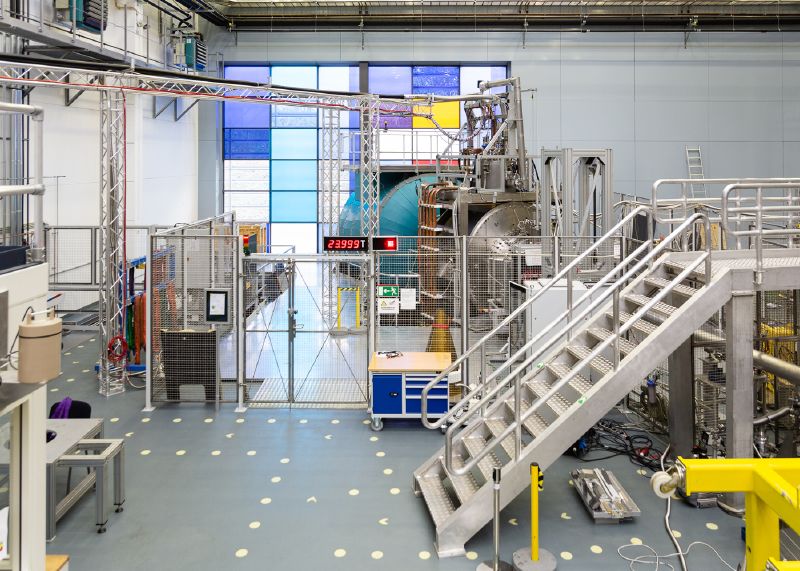Decommissioning Research Reactor BER II
How did BER II work?
Neutrons are components of every atomic nucleus. They are tightly bound within it; only a few materials neutrons can released from. In BER II, uranium nuclei were split.
Nuclear fission
Fission, or splitting, occurs as a chain reaction: when a slow-moving neutron collides with the nucleus of a uranium atom, the neutron is absorbed and the nucleus breaks apart. This splitting results in several fission products including, among others, neutrons, lighter atomic nuclei, radioactivity and heat.
The heat power generated at BER II was 10 megawatts. This was dissipated by cooling. A portion of the neutrons was needed to keep the chain reaction going. The remaining portion, however, was guided through so-called beam tubes to the experimental stations.
The experimental infrastructure
The experiments were housed in three halls. The first hall, known simply as the experimental hall, rans all the way around BER II. The beamlines came directly out of the wall of the reactor basin and were connected directly to the experimental infrastructure, so the experiments were set up closely along the edge of the basin. The neutrons that arrived here were moving very fast and were therefore very energy-rich. They are known as thermal neutrons.
A large portion of the neutrons, however, were redirected through a special conical beamline into so-called neutron guides. Here, they were slowed down so that they could continue on as cold neutrons to the more distant neutron guide halls I and II.
The cold source
The neutrons were slowed down using extremely cold hydrogen. This was kept in a special vessel built into the conical beamline. This component was therefore known as the “cold source”. In it, the neutrons ran into the hydrogen atoms, thereby losing a lot of energy.
The ability to experiment with cold neutrons opened up many new possibilities for neutron-based materials research. The work at BER II contributed significantly to this. It allowed, for example, even plastics and biological macromolecules to be studied with neutrons.


